Los Angeles mayor Eric Garcetti made headlines recently by unveiling the city’s version of a “Green New Deal,” complete with ambitious goals to create a zero-emission transportation network, a zero-carbon electricity grid, and a Los Angeles that “won’t send a single piece of trash” to the landfill by 2050.
The goals in the new sustainability plan [PDF] are necessary to meet our environmental and sustainability needs, but how can the city make them feasible to achieve?
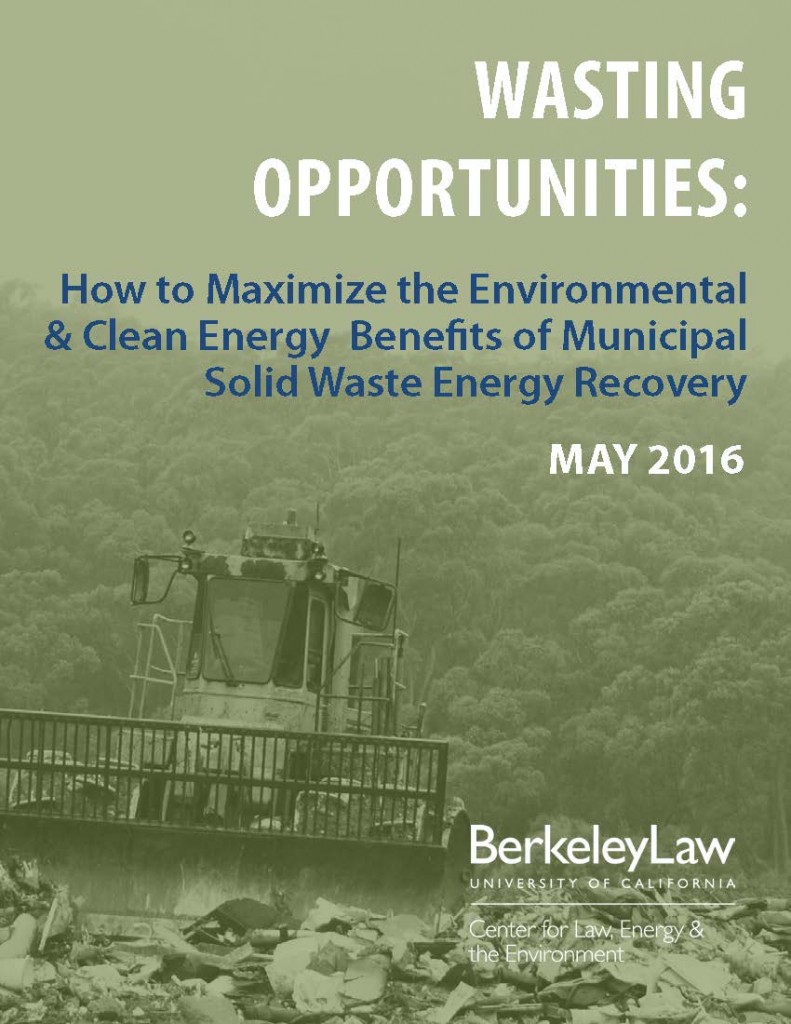
I discussed the zero-waste goal in particular on KPCC radio’s AirTalk program, along with my UCLA Law colleague Cara Horowitz. My comments were drawn largely from the 2016 CLEE report “Wasting Opportunities” on boosting energy recovery from municipal solid waste to meet climate goals.
The bottom line? Achieving zero waste will require significant reduction of materials in use, increases in recycling and composting, and — yes — some type of energy recovery from whatever is left over. You can listen to the broadcast here.
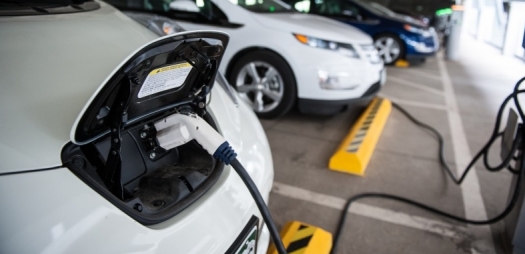
Policy makers and industry leaders have a tough challenge making electric vehicles accessible for the world’s urban residents. Apartment dwellers, for example, often lack access to dedicated spots with electricity to charge the vehicles, while other city residents may need access to shared EVs to get around city streets. Unless EV leaders can solve these challenges, global deployment of this vital clean technology will be limited.
To discuss these issues and solutions from around the globe, please join us on Tuesday, June 4th and Wednesday, June 5th, as Berkeley Law’s Center for Law, Energy and the Environment (CLEE) partners with the University of Paris for an international conference on urban EV deployment, with a focus on policies and perspectives from California and France.
“Electric Vehicles and Global Urban Adoption“ will feature top officials from the Newsom Administration and other electric vehicle industry experts, including:
- Jamie Hall, Manager of Public Policy, General Motors
- Dominique Lagarde, Director of Electric Mobility, Enedis (France’s largest Distribution System Operator)
- John McGinty, Senior Business Development Associate, Uber
- Patty Monahan, Commissioner, California Energy Commission
- Carla Peterman, Former Commissioner, California Public Utilities Commission
- Debbie Raphael, Director of the Department of Environment, City of San Francisco
- Alice Reynolds, Senior Advisor for Energy, Office of Governor Gavin Newsom
In addition, the event will feature a pre-conference tour of the Tesla factory in Fremont, California (space is limited to early registrants) and a guided tour of an innovative, micro-grid ready EV charging facility in Downtown Berkeley.
Register on-line (admission is $20, which includes breakfast and lunch both days) and view the full agenda. The event will take place at the Bancroft Hotel, across from Berkeley Law. Nine hours of MCLE credit is available for attorneys. Hope to see you there!
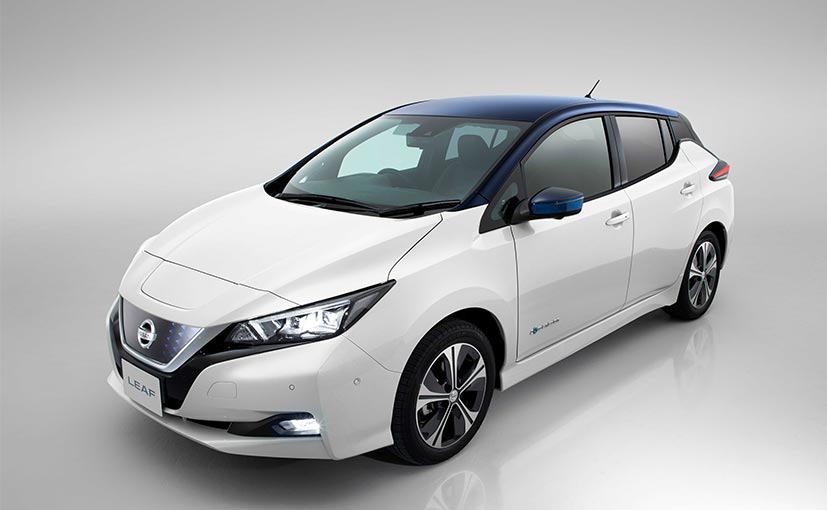
Kyle Hyatt at RoadShow on Cnet.com helpfully lists all the fully battery-electric vehicles available for sale right now in the United States, for anyone on the market or interested in the industry’s progress toward electrification. I condensed his alphabetical list below to focus mostly on mileage range per charge and price, as those are among the most critical features for many car buyers:
- Audi E-Tron: An electric SUV with a 95 kilowatt-hour battery, it provides a maximum range of 204 miles with a starting price around $75,000.
- BMW i3: A boxy urban EV with a carbon-fiber chassis to reduce weight, it has a relatively short range of up to 153 miles with a price at $44,450.
- Chevrolet Bolt EV: An alternative to the Tesla Model 3 (see below), this is vehicle has a solid range at 238 miles at a starting price of $36,620.
- Fiat 500e: Just under $33,000, you only get a range of 84 miles.
- Honda Clarity Electric: A range of just 89 miles, with only leasing options available.
- Hyundai Ioniq Electric: This hatchback sedan has 124-mile range and is listed for just over $30,000.
- Hyundai Kona Electric: An exciting new crossover SUV with a range of 258 miles and a price starting at $36,950.
- Jaguar I-Pace: An alternative to the Tesla Model X (see below), it has received excellent reviews on performance. It has a range of 234 miles and is priced around $70,000.
- Kia Niro EV: Another exciting new battery-electric SUV with a range of 239 miles for $38,500 to start.
- Kia Soul EV+: A range of only 111 miles for $34,000 starting price, with a recommendation to wait for the upcoming 2020 model.
- Nissan Leaf: The “granddaddy” of EVs, it has a decent range at 150 miles for under $30,000.
- Nissan Leaf Plus: Range at 226 miles for about $33,000.
- Smart Vision EQ Fortwo: Not a massive seller in the U.S. (I hadn’t even heard of this car before), and the 2019 model year will be the company’s last in the U.S. and Canada, given low sales numbers. The range is just 58 miles for about $30,000 (ouch).
- Tesla Model 3: The long-range all-wheel drive model offers a 310-mile range for around $50,000 or so. The elusive $35,000 version offers a range closer to 200 miles.
- Tesla Model S: The Model S 100D can now achieve 370 miles on a single charge at about $88,000 in price. The cheaper “75” version has range in the mid-200 miles.
- Tesla Model X: The X 100D now offers 325 miles of range on a single charge, with prices well over $100,000. A cheaper “75” version with less range is available.
- Volkswagen e-Golf: Range at 119 miles, with a starting price of $31,895.
Overall, it’s a solid list of electric vehicles with some relatively affordable options and diverse models available. And with automakers planning to roll out even more models in the coming few years, this list should grow dramatically from here on out.

As I began researching the history of the Los Angeles Metro Rail system for my 2014 book Railtown, one particular aspect of the rail transit story shocked me. No, it wasn’t the petty political squabbles, short-sighted civic leadership, or selfish parochialism that slowed, weakened and sometimes stymied the development of a functional rail system in Los Angeles. It was the shocking price tag of building rail transit — particularly tunneling under busy city streets — and the absurd amount of time (decades in some cases) to dig tunnels that more than a century ago were done in a fraction of the time it takes today.
Like the rest of the United States, Los Angeles suffers from exorbitant costs and delays with tunneling. The 1.9 mile Regional Connector light rail tunnel under downtown, for example, will cost almost $1.7 billion and take at least 8 years to complete. Nationwide, as transit expert Alon Levy has documented, tunneling costs are out of whack even compared to other developed nations, with New York City’s $2.6 billion-per-mile Second Avenue subway as a particularly gruesome transit horror story.
So I was intrigued this past December when I learned that Elon Musk’s Boring Company was unveiling a demonstration tunnel in Hawthorne, California, that could be built quickly and at a fraction of the cost. How cheap? 1.14-mile for just $10 million, with potential long-term improvements in speed of up to 15 times over the current rate.
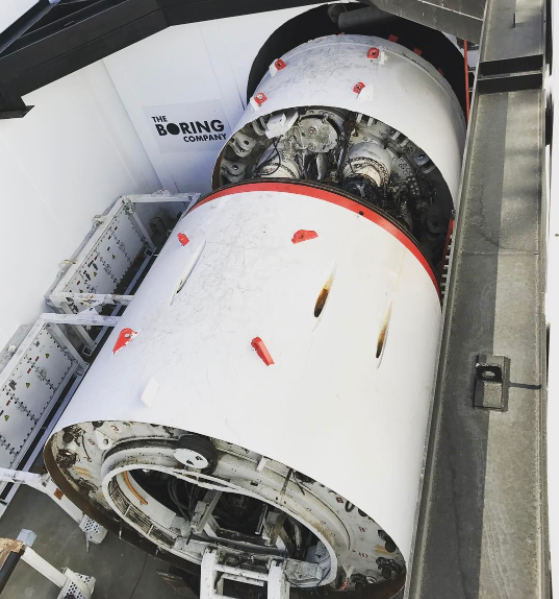
Many urbanists sneered, deriding the tunnel as nothing more than a sewer pipe and mocking the idea of a “tunnel for Teslas” as simply recreating the failed surface roadway patterns of the present — or worse, catering to the wealthy by allowing them to avoid the congestion caused by the plebeians above.
Many of these same urbanists already resented Musk for his work with Tesla, a company which promotes a vehicle technology that they rightly identify as destroying our urban fabric, while he also (ironically) works to remove one of the arguments against cars by eliminating their tailpipe pollution.
But what if Musk and his rocket scientists from SpaceX really could bring down the cost and time of tunneling? Imagine the transit projects that could ensue. I’ll offer four, just here in California alone:
- A subway under Wilshire Boulevard in Los Angeles, the densest corridor west of the Mississippi, while Metro, the public agency currently trying to build one, is mired in a decade-long, multi-billion dollar slog.
- A subway connecting West L.A. with Sherman Oaks and the San Fernando Valley underneath the dreaded Sepulveda Pass and the freeway parking lot known as “The 405.”
- A second Bay crossing connecting Oakland and San Francisco to address congestion on BART and possibly allow one-seat train service from San Francisco to Sacramento.
- A tunnel connecting San Francisco to Los Angeles and San Diego, completing the dream of the flailing high speed rail project.
Those four projects alone would make any California urbanist happy. Yet how seriously can we take the Boring Company’s claims regarding decreased tunneling costs and time?
I took a tour of the test tunnel in Hawthorne last month to try to gain more clarity on how the company is reducing tunnel costs. Three things stood out:

- The Dirt. Believe it or not, what to do with the dirt that comes out of tunnels is a big limiting factor. I heard this first-hand from the tunneling experts working on the Regional Connector project under downtown Los Angeles. Yet the Boring Company may have found something simple and innovative to do with that dirt: turn them into functional bricks. To prove their point, they built a Monty Python-style tower out of the bricks on site. If the bricks can be given away for free, it will greatly reduce costs. If they can sell the bricks for use in things like sound walls, they say they could actually make money on the tunnel (see the picture above and video below of the dirt brick-making process).
- Private funding incentives. The Boring Company is envisioning a privately funded network of tunnels throughout California and beyond. They are not necessarily contemplating bidding on large public sector contracts. As a result, the company appears to have incentives to cut costs in ways that some of the few big tunneling companies competing for select large public contracts may not. As an example, the company can save costs simply in terms of where they manufacture the tunnel’s concrete segments relative to the tunnel, a cost-saving step that they say the big tunneling contractors aren’t financially motivated to take.
- Lots of little things. There appears to be no one single leap forward with the Boring Company machine. But instead, the company’s leaders say they’ve managed a series of smaller innovations that combined together could help reduce the costs dramatically. Perhaps most significantly, the tunnel bore has a smaller diameter than many rail tunnels because they don’t need the wiring and infrastructure that a train needs, but it’s still large enough to fit a vehicle with the carrying capacity of a subway train. Their vision is to run battery-powered, autonomous vehicle platforms in the tunnels, rather than hard wire expensive rail cars. It’s a vision of where technology is heading that could eventually lead to existing rail transit being converted to autonomous, battery-powered, platooning shuttles, which could carry the same passengers as rail but for a fraction of the capital and operating costs.
In any event, we’ll soon see if these company claims are accurate, as the Boring Company appears ready to work on a tunnel under the Las Vegas convention center soon.
And while urbanists fret about the potential for expanded subterranean capacity for solo drivers, there’s no reason that the technology would only be employed for that use and couldn’t scale to the level of current public rail transit. The company sees Model X battery-powered platforms seating between 16 and 32 passengers traveling up to 165 miles per hour through LED-lit tunnels. And with five boring machines in action, they think they could reach San Francisco in just a year. That vision — though of private and not public transit — would only bolster urbanist goals of car-free living in more dense, transit-oriented communities.
A big limiting factor though, beyond the technology, may be permitting. Environmental review under the California Environmental Quality Act (CEQA) may slow this deployment. Under the law, permitting agencies will have to study and mitigate environmental impacts ranging from paleontology to induced land use changes and traffic at the surface entry points to the tunnel. We’ll see how that process plays out, if the Boring Company starts moving forward on a project in California.
But if Musk and his crew have actually solved the technology and cost problem of tunneling, they will have given transit backers throughout the United States and beyond a big reason to celebrate. Because a revolution in tunneling is a pipe dream worth pursuing in our increasingly urban world.
Pacific Gas & Electric, California’s largest investor-owned utility is about to declare bankruptcy, which could undermine the state’s climate goals. The utility faces massive liability for potentially causing the recent devastating Northern California wildfires.
If bankruptcy happens, California’s clean energy companies — from solar PV facilities to energy efficiency contractors to electric vehicle charging businesses — could soon lose one of their top customers and potentially see their existing contracts ripped up. And that means the state is losing a major investor in various climate programs.
Buzzfeed and E&E News [paywalled] covered this story in more detail, including some quotes from me.
Going forward, I hope the state and various local governments in PG&E service territory consider the following reforms:
- Break up PG&E’s electricity and gas divisions, with the long-term goal of phasing out natural gas use in the state. We mostly likely need to accomplish this phase-out anyway and move towards all-electric appliances and building. A breakup could hasten that progress.
- Buy out PG&Es assets and form municipal utilities. San Francisco is already exploring purchasing the “sticks and wires” in the city to form its own utility. Municipal utilities in the state tend to have cheaper rates and often more aggressive clean energy policies (such as Sacramento Municipal Utility District), so this could be a good move overall for ratepayers and the environment. Although it’s worth noting that PG&E is one of the cleanest utilities in California already.
- Revamp liability for wildfires going forward. Right now, whichever party is responsible for igniting a blaze is 100% liable for all damages. But what about property owners who failed to maintain and “fire-harden” their buildings? What about local officials that allow development in high-risk fire zones? What about polluting companies that caused climate change, which exacerbated the fires’ intensity? Liability should fall on these parties, too, giving them incentive to correct their actions going forward and hopefully reduce the severity of future wildfires.
These reforms would be a welcome outcome from an otherwise unfortunate situation. In the meantime though, it’s hard to foresee an outcome of PG&E’s death spiral that won’t at least temporarily slow our climate progress in California.
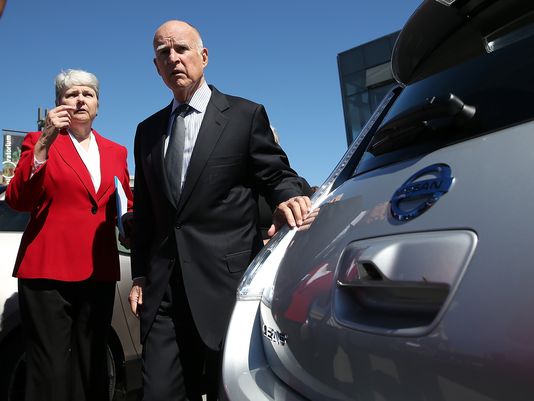 Today California inaugurates a new governor, Gavin Newsom, and says goodbye to four-term governor Jerry Brown. Governor Brown made climate change a central issue in his last two terms. Here are (to my mind) his top achievements on this issue:
Today California inaugurates a new governor, Gavin Newsom, and says goodbye to four-term governor Jerry Brown. Governor Brown made climate change a central issue in his last two terms. Here are (to my mind) his top achievements on this issue:
- Setting and signing clean energy goals: Some may take it for granted now, but when Governor Brown came into office, solar panel prices were almost 80% higher than they are today. By setting goals like 50% renewable energy by 2030 and now 100% carbon-free electricity by 2045, and then signing legislation to codify them, Governor Brown helped boost a global market for clean power that has dramatically reduced prices and helped California achieve its 2020 climate goals four years early. The progress also enabled countries and states around the world to take advantage of lower-cost renewable energy.
- Bolstering a low-level carbon tax through cap-and-trade: Governor Schwarzenegger originally launched the state’s cap-and-trade program before Gov. Brown took office, but Brown seized the mantle and put his political capital behind extending it through 2030 with a two-thirds legislative vote. While the program has its flaws, its minimum price floor guarantees something that approximates a low-level carbon tax, which produces billions of dollars for climate investments, from weatherization to high speed rail. It also strengthened the state’s image as a global climate leader in time for the 2015 Paris accord.
- Forging global climate cooperation: Gov. Brown’s senior advisor Ken Alex hatched the idea in early 2015 of a global pact of subnationals (cities and states) that wanted to take more ambitious action on climate change than their national governments. The movement took off, with California and the German state of Baden-Württemberg in the lead as founding members. Today it boasts a coalition of 220 governments who represent over 1.3 billion people and 43% of the global economy. It successfully pushed international climate negotiators to take stronger action on climate in 2015 and continues to be an important political and problem-solving force for climate on the world stage.
- Boosting zero-emission transportation: Much like renewable energy, zero-emission vehicles like battery electrics were very expensive when Governor Brown took office. But thanks in part to his leadership to boost incentives and mandates for these vehicles and the batteries that supply them, as well as the charging infrastructure to fuel them, battery prices have plummeted since he took office. This technological advancement has enabled longer-range, more affordable electric vehicles like the Chevy Bolt EV and Tesla Model 3. California is now home to roughly 50% of the plug-in electric vehicles nationwide, with home-state Tesla selling the majority of those vehicles in 2018. Progress on this technology is crucial, as climate policy will fail if we don’t reduce emissions from the transportation sector more generally.
- Setting long-term carbon neutrality goals: Governor Brown’s 2018 executive order calls for California to achieve carbon neutrality by 2045. It’s a bold goal that the legislature may soon codify, and it’s needed according to climate science. What it means is that the state will seek to offset whatever emissions it can’t reduce by 2045, possibly through technologies or practices that drawdown carbon from the atmosphere and sequester it in (or on) the ground. That type of technology will be an important next phase for climate action, as we seek to repair the damage done from historic emissions.
- Improving climate communication: Governor Brown never shied away from discussing climate change and made it a point to tell audiences about the dire threat and changes required to address it. At a time when political media generally stays away from climate coverage, Brown forced the issue to educate the public about the need for action. The most recent highlight was the September 2018 Global Climate Action Summit in San Francisco, which attracted major celebrities, activists, world leaders and media coverage for the issue.
Yet with all of these successes, Governor Brown leaves with one giant piece of unfinished business on climate change: achieving climate-friendly land use. In short, the governor was unable to ensure that most new housing and other real estate development in the state happen in the most climate-friendly locations (near transit and in existing urbanized areas) and types (i.e. multifamily, compact development). As a result, driving miles in the state are way up, as are emissions from transportation.
To be sure, the governor signed some helpful (though small-bore) legislation to address the challenge, and he achieved some reforms to the environmental review process that can hold up meritorious projects. But it was ultimately not nearly enough. It will therefore be up to the next governor and legislature to chip away at the local control that has has stymied this climate imperative. Increased sprawl and driving miles will otherwise undermine our emission reductions in other sectors.
On balance though, it’s hard to imagine California (or the world) having a more effective, focused and sincere advocate for action on climate change. For that reason, Governor Brown will be missed, though I look forward to seeing what he will accomplish out of office as a private citizen. He has left some big shoes for Gavin Newsom to fill — and a path forward on climate change for the rest of us to follow.
As 2018 nears its end, here are my Top 6 developments in climate & energy policy this year:
-
- Worldwide greenhouse gas emissions increase. Let’s start with the bad news for 2018: emissions are rising like a “speeding freight train,” primarily due to more coal-fired power coming on line for India and China, plus more energy use in the United States. Emissions are expected to increase 2.7 percent in 2018, according to research published by the Global Carbon Project. Meanwhile, a U.N. report in October indicated that the world may have just about a dozen more years to get emissions under control enough to avert disastrous warming. These reports should be concerning to everyone.
- Solar PV hits policy and deployment bumps but with long-term growth potential. With declining policy support worldwide, including costly tariffs on solar PV in the U.S., solar PV leaders have seen a downturn in 2018, for the first time in recent memory. Globally, according to the Frost & Sullivan (F&S) report Global Renewable Energy Outlook, 2018, the world saw 90 gigawatts (GW) of new solar installations for 2018, which was a slight year-on-year decrease. Overall though, renewable capacity will see 13.3% annual growth in 2018. The report authors expect global investment in renewable energy for the year to be $228.3 billion, a slight increase of 0.7% over 2017. In the U.S., according to latest industry figures, the third quarter saw installed solar PV capacity experience a 15% year-over-year decrease and a 20% quarter-over-quarter decrease. However, total installed U.S. solar PV capacity is expected to more than double over the next five years. Overall, the picture is concerning but with a potentially positive long-term outlook.
- EV sales increase worldwide, with 1 million in the U.S. and the Tesla Model 3 finally unveiled. The chart below tells the largely encouraging story:
 China leads the pack with 40% of all sales. Here in California, sales just reached half a million, with one million nationwide. Prices continue to fall, and the Tesla Model 3 became the #6 top-selling car in the U.S. in November. Of all the climate change news, this progress on vehicle electrification may be the most hopeful, although we’ll need to see even more rapid deployment over the next decade to get growing worldwide transportation emissions under control.
China leads the pack with 40% of all sales. Here in California, sales just reached half a million, with one million nationwide. Prices continue to fall, and the Tesla Model 3 became the #6 top-selling car in the U.S. in November. Of all the climate change news, this progress on vehicle electrification may be the most hopeful, although we’ll need to see even more rapid deployment over the next decade to get growing worldwide transportation emissions under control. - Electrification of transportation spreads to trucks, buses and scooters. The EV revolution has spread, with cheaper, more powerful batteries now making electric “micromobility” options feasible, such as e-bikes and e-scooters. 2018 was truly the year of the e-scooter, when it comes to city streets. And on the heavy-duty side, companies are unveiling previously unheard of electric models, such as Daimler Trucks North America making the first delivery of an all-electric delivery truck, the Freightliner eCascadia, while the California Air Resources Board last week enacted a new rule requiring transit buses to be all-electric by 2040. All told, it’s a positive development for low-carbon transportation.
- Movement to legalize apartments near transit in California and across the U.S. All the electrification we can muster on transportation won’t matter much if we don’t decrease overall driving miles. It’s a particular problem in the U.S., with so many of our major cities built around solo vehicle trips. So it was encouraging to see California attempt to legalize apartments near major transit with Scott Wiener’s failed SB 827 earlier this year (which started a productive conversation) and now a potentially viable version in SB 50. The movement is catching on around the country, as Minneapolis just voted to end single-family zoning. It’s long overdue and our only real hope to decrease driving miles.
- Trump rollback proposals increase but face judicial setbacks. Trump’s attack on environmental protections made news all year, particularly his attempted rollback of clean vehicle fuel economy standards. The only bright spot is that many of his regulatory rollbacks are sloppy and getting shot down in the courts, as my colleague Dan Farber noted in a report and recent Legal Planet post. And with Democrats set to control the House of Representatives next month, pro-environment legislators are set to have more negotiating power on everything from the budget to enforcement to policy oversight.
So the trends overall are uneven, with a lot for concern and also promising technology and policy momentum still in effect. 2019 could also greatly change this picture, with a potentially slowing economy and more private sector innovation on clean technology.
Overall, those who care about these issues have a lot to digest and ponder this holiday season, along with the cookies. See you in 2019!
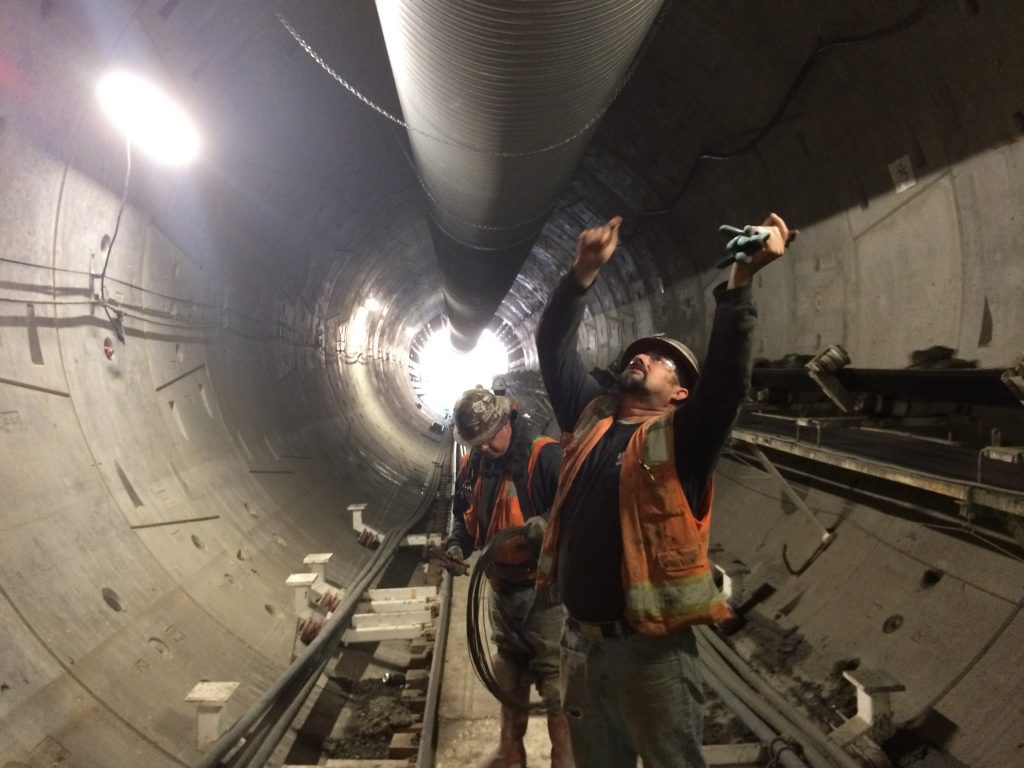 Short answer: no. At least not the way they’re currently presented, as a single-track option for private vehicles with solo drivers. It’s the equivalent of building new roads on the surface: once you build them, traffic quickly increases to fill them.
Short answer: no. At least not the way they’re currently presented, as a single-track option for private vehicles with solo drivers. It’s the equivalent of building new roads on the surface: once you build them, traffic quickly increases to fill them.
However, if the tunnels improve their efficiency by squeezing more people into the vehicles, such as through shared rides or right-sized “pods” for individuals, then Musk’s tunnels could provide a significant benefit. But of course at that point they start to look exactly like a subway car, only with the cars replaced by Teslas.
Perhaps for this reason, many transit advocates are heaping scorn on Musk’s plan. They were also predisposed to resent Musk personally because he has criticized public transit in the past and has revolutionized passenger vehicles through battery electric technology, which some transit advocates mistakenly view as a threat to political support for expanding transit.
For my part, I don’t think it matters if Musk’s plan fails, since it’s a completely private venture. And if it succeeds, the public will benefit in multiple ways: from improved tunneling technology to new capacity to move people (albeit only those who can afford it) faster across town.
But I do have some “red lines” for my overall indifference to the venture:
- No public dollars should be spent on the project, unless there are commensurate public benefits. Essentially, the tunnels would have to be affordable to all and accessible to those who can’t afford a vehicle (i.e. function like traditional public transit).
- No public giveaways in terms of subsurface land rights. The tunnels should have to compete on a level playing field with public transit tunnels, in terms of these types of land costs. I’m otherwise okay with waiving some environmental review (i.e. transportation, aesthetic, and parking impacts, among others), as I would be with any other public transit tunnel.
- The tunnels should not interfere with public transit tunnels. That means the tunneling shouldn’t prevent future subway tunnel extensions, and the ingress and egress for the tunnels shouldn’t impede bus lanes and pedestrian access to transit, as well as critical transit-oriented development.
As long as the venture doesn’t cross those lines, I wish The Boring Company and Musk success and will hope for positive spillover for the general public. And I also wish that they fulfill the original vision of right-sized, shared vehicles in the tunnel that increase efficient use of space and decrease incentives for solo driving.
Given Musk’s commitment to averting climate change, that’s a vision I think he’d support.
The Boring Company Loop system pic.twitter.com/xVpDHzZKXB
— The Boring Company (@boringcompany) December 19, 2018
Elon Musk may have just disrupted another industry. In this case, it’s transportation tunneling. His Boring Company last night unveiled a 1.14-mile “proof-of-concept tunnel” in Hawthorne at a cost of $10 million (see Twitter video above).
/cdn.vox-cdn.com/uploads/chorus_image/image/62706193/Boring_tunnel__2.0.jpg) As Alissa Walker described in Curbed LA after attending the launch, the tunnel features a track for a Tesla to drive underground, as a sort of subway transit for private vehicles. While the tunnel is getting a lot of press, transit advocates have concerns about how effective this type of private transport might be.
As Alissa Walker described in Curbed LA after attending the launch, the tunnel features a track for a Tesla to drive underground, as a sort of subway transit for private vehicles. While the tunnel is getting a lot of press, transit advocates have concerns about how effective this type of private transport might be.
But perhaps more important is Musk’s potentially significant advancement in tunneling technology, which could offer major benefits for subway tunneling everywhere (and maybe even please those same pro-transit critics).
Bloomberg summarized the engineering progress:
Musk said that the advances his team has made in tunneling technology would increase the speed of boring underground by up to 15 times. The company will do that largely through tripling the power of the drill itself, he said, and through logistical interventions such as building segmented reinforcements in the tunnel walls while continuing to drill.
Given the numbers that Musk reported last night, he may have netted significant results, with a relatively minuscule price of $10 million for 1.14 miles.
By comparison, recent per mile tunneling costs around the country have been staggeringly high, as Alon Levy noted in CityLab. For example, New York City’s recent Second Avenue Subway clocked in at an astounding $2.6 billion per mile. San Francisco’s central subway and Los Angeles’s regional connector subways are not much better, at $920 million per mile, while the L.A. Purple Line subway may cost $800 million per mile. That means these major transit system tunnels are costing as much as 100 times more than Musk’s prototype tunnel.
But are we comparing apples to apples? Not really. The costs described above include much larger diameter tunnels, as well as station “boxes,” utility relocation, ventilation, and safety features, among others. As Alon Levy calculated back in 2017, even in a best-case scenario with cheaper “cut and cover” station boxes, U.S. subway tunneling would likely still cost $500-600 million per km ($800-$960 per mile). Musk’s tunnel by contrast is quite bare bones, with no station boxes or complex systems and space for only one vehicle.
For a better comparison, we can look to Laura Nelson’s reported numbers for the Purple Line heavy rail extension in the Los Angeles Times. She described back in June the tunneling contract for the 2.59-mile extension from Century City to West Los Angeles, which is projected to cost $3.59 billion total. But the actual tunneling contract is smaller: $410-million for a four-year design and construction contract to Tutor Perini. So the costs just for tunneling (assuming these numbers will be accurate, which is doubtful based on past experience) will be $158 million per mile, not including land acquisition and moving utility lines.
But that $158 million per mile is still 15 times the cost of Musk’s Boring Company tunnel.
Ultimately, more analysis and investigation will be needed to understand how the costs for Musk’s single-track tunnel might compare to a large-scale, twin-bore subway tunnel with all the safety, lighting, and ventilation features that we see in big urban transit projects.
But the early numbers indicate that Musk may have just achieved a significant breakthrough in reduced tunneling costs, with major benefits for transit everywhere.
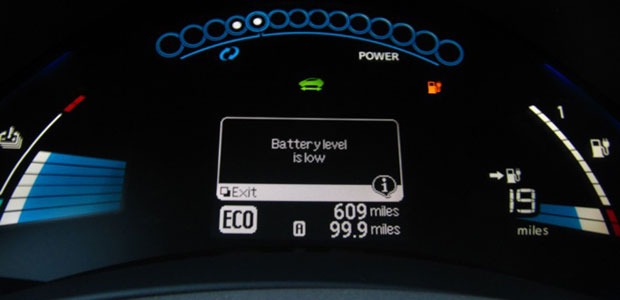 As congressional Republicans and the Trump Administration try to roll back the clock to promote gas-guzzlers over zero-emission vehicles, China, South Korea and Japan are all vying to dominate the battery market for electric vehicles. So far, China is outstripping its neighbors, as Nikkei Asian Review reports:
As congressional Republicans and the Trump Administration try to roll back the clock to promote gas-guzzlers over zero-emission vehicles, China, South Korea and Japan are all vying to dominate the battery market for electric vehicles. So far, China is outstripping its neighbors, as Nikkei Asian Review reports:
Last year Chinese makers claimed seven of the top 10 slots on the list of the world’s largest suppliers of lithium-ion batteries for EVs, according to Chinese research company Gaogong Industry Research Institute. BYD ranked third globally, after Panasonic — which produces batteries for Tesla — and China’s Contemporary Amperex Technology Ltd., or CATL, the world’s top EV battery manufacturer.
According to projections by Bloomberg New Energy Finance, China will produce 70% of the world’s electric-vehicle batteries by 2021. The potential rewards are huge: Goldman Sachs estimates that sales of batteries to power cars will rise from under $10 billion to $60 billion by 2030, driven by a global push to reduce greenhouse gases.
South Korea and Japan have long histories in this field though and won’t fade quietly. For example, Panasonic in Japan provides Tesla with its batteries, while South Korea’s LG Chem has supplied Chevrolet.
But China’s emerging dominance should be cause for concern for those nations that would like to gain a piece of the profits from the burgeoning electric vehicle market. And while strong Chinese investment in batteries should be good for consumers overall through cheaper battery and vehicle prices, we’ve seen before the negative effects of having just a handful of countries control the market for fueling.
Either way, this booming East Asian investment in zero-emission vehicles should put American policy makers on alert about how much the U.S. stands to lose by ceasing to support crucial clean vehicle technology.


